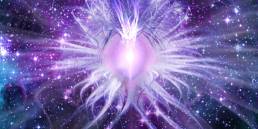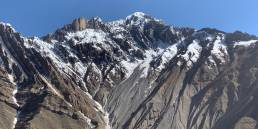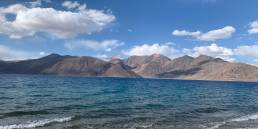THE LEVITATED STONE STATUE

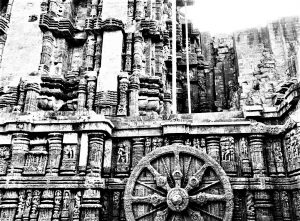
More than 500 years ago the enemy stood at the gate of a massive temple in the kingdom of Kalinga. This temple was constructed by the ancestors of the same king whom he had come to kill and destroy his kingdom. The enemy barged into the sanctum sanctorum of the temple in rage and a single-minded determination to kill and ruin, but what he saw left him awestruck….
The statue of the deity placed in the Sanctum Sanctorum was levitated in midair. There was a huge diamond on the crown that dazzled his eyes. The rays of the sun were falling on it and lighting up the interior, creating that breathtaking picture that he had only heard in tales…
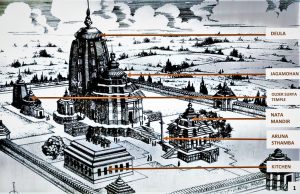
I have heard many stories and folklores about this temple, and have been amazed by the magnanimity countless times but it had never caught my attention as it did on a recent trip when my 8-year-old son asked me questions that I had no answer to. I had actually never thought of the possible explanations. This compelled me to research the topic.
The topic is about the levitated statue of the sun god, also called “Arka”, the centuries-old temple where this statue was levitated, the construction itself of this huge temple, the enemy at the gate, the brilliant Architect behind this amazing architecture, the visionary King, his prosperous kingdom, and the folklores that still strike a chord every time we hear about it.
I am talking about the Surya Mandir (Sun Temple) of Konark, Odisha. The sun temple we see now has risen from complete ruins, thanks to the relentless efforts of archeologists and the Government
Going back to the very beginning of this saga, around 1250 AD King Narsingh Deva-I of the Eastern Ganga Dynasty commissioned a temple dedicated to the Sun god. That is how this place got its name, “Kona (corner)”- “Arka (Sun)” or Konark. Sadashiva Samantray a Minister of the king was entrusted with the task to construct the temple on the banks of River Chandrabhaga, which dried up many centuries ago. The Sun temple of Konark was designed by the great Architect, Bisu Maharana. The style of the temple is called as the Kalinga style of Architecture. It consists of The Deul (sanctum sanctorum), Jagamohan (Assembly Hall), and Nata Mandir (Festival/Dancing Hall). The Bhoga Mandir/Kitchen is to a side, unlike later temples where all four structures were constructed on the same axis.
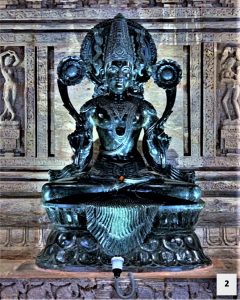
The Sanctum Sanctorum which does not exist now was a mammoth 230 ft structure. The temple complex has the appearance of a high ornamented chariot with immense wheels and horses, all carved from stone. The wheels are nearly 12 feet (3.7 m) in diameter, 24 in number, and elaborately carved. Also, this chariot-like structure seems to be pulled by a set of seven horses. There is another temple on the same premises which is older dating back to the 11th century also dedicated to the Sun god.
Kalinga during the rule of the Ganga Dynasty was a prosperous kingdom and is said to have had trade relations with East Asian and African Countries. Among other countries with Egypt, there was an exchange of knowledge besides trade.
Egyptians by that time were already experts in mega constructions. Also, the Egyptians prayed to the Sun god “Ra” and erected huge monuments for him. Sand ramps that were used to construct such tall structures could be one of the takes from Egypt. Bisu Maharana, the architect is said to be an expert in Ferro-magnetism and the design of the temple involved the play of magnets, metals, and graphite slabs or diamagnets. The statue in the sanctum sanctorum even though has disappeared, was assumed to be sitting in Padmasana “Lotus pose” with two lotuses in hand. A diamond was said to have been placed on the crown of the deity. The temple was so designed that the first ray of the Sun used to pass through the entrance of Jagamohan and then hit the diamond on the crown creating a resplendent scene even though for a few minutes in the entire day.
The sun temple was made from three types of stones, Chlorite, Laterite, and Khondalite. None of these stones occur naturally nearby. Around twelve hundred artisans, masons and workers were employed for 12 long years to complete the temple. As the masons were not allowed to leave the site during these 12 years, they depicted their emotions, their longings, and family life in the carvings besides depicting the king and his family, mythology, war, flora, and fauna, and daily routine. A great many stories are associated with the Temple of Konark. Of them, the most famous ones are of Dharmapada and Kalapahad. Dharmapada played his part in the building of the temple while Kalapahad played his part in destroying it. This temple was called the “Black Pagoda” by European sailors in the 17th century because it looked like a great tiered tower that appeared black.
Dharmapada
Bisu Moharana and his team of twelve hundred men had worked tirelessly for 12 years and were in the final stage of completing the temple. When they tried to levitate the statue of Sun God, we’re failing, again and again, to align the Statue, diamagnet, the base, and the coping stone or Kalasa correctly. The king had been eagerly looking forward to the completion of the temple which he was considering his biggest tribute to his revered deity and his people. As the day of the King’s visit neared, Bisu Moharana and the artisans started fearing for their life. Dharmapada Bisu Moharana’s 12-year-old son, after hearing his father’s situation set out to meet him.
Dharmapada, who had never seen his father had grown up playing with his father’s Magnets and other diamagnetic materials. Dharmapada was smart and naturally gifted. Upon learning of the issue being faced, he climbed to the top and successfully managed to place the Copingstone/Kalasa in the right orientation thus perfectly levitating the deity in the air. There was widespread rejoicing in the camp which turned into panic anticipating the outcome, once the king comes to know that, a small boy could do something that the seasoned engineers couldn’t accomplish. King might get anget and behead all twelve hundred of them. Dharmapada overheard this and jumped from the temple roof into the Chandrabhaga river in order to save the life of his father and everyone in the camp. Though there is no documentation or clear indication of whether the deity was worshipped or not but the deity is said to have remained levitated like that for approximately three centuries until the notorious Kalapahad destroyed it forever.
Story of Kala Pahad- The Enemy
Rajib Lochan Ray was the Commander of the kingdom of Kalinga under King Gajapati Mukunda Deva of the Ganga Dynasty. He was also commanding the huge combined army of the kings of Kalinga (Odisha), Bengal, and Bihar against the Afghan Sultan of Gaur Sulaiman Karrani in 1565. Karrani suffered a massive defeat from this army and realized he could never win against them as long as Rajib was commanding the army. Rajib was a Brahmin from Bengal, dark-skinned, huge built, merciless, and showed phenomenal Valor on the battlefield. For all obvious reasons, he was a favorite of the Gajapati, who had given him the nickname Kala Chand (the black moon).
Karrani is said to have hatched a plan to lure Rajib into marrying his extremely beautiful daughter Gulnaz under the condition he would convert to Islam. Initially hesitant, Gulnaz is said to have convinced Rajib that they both would reconvert to Hinduism after reaching Puri. However, upon reaching the Jagannath temple at Puri, the priests denied Rajib entry into the temple also refused to convert him back. Even King Mukundadeva is said to have been extremely upset by Rajib’s conversion and announced that neither Rajib nor his future generations will be allowed to convert back to Hinduism. Rajib distraught at losing his identity, home, and faith in one go disappeared for 3 years. He returned again to Kalinga, now known as Muhammad Farmuli and nicknamed Kala Pahad (black mountain). Now he was the destructor of everything he had protected earlier. He brought with him the Afghan army and is said to have ransacked temples, defaced idols, killed, plundered Kalinga again and again. The temple of Konark also faced his wrath.
The Ruins
The Sanctum Sanctorum which was a mammoth 230 ft structure does not exist now except for the platform on which it stood. The Jagamohan is intact and still stands majestically overlooking the landscape. In the 1900s when the Jagamohan started showing signs of damage, fearing its collapse, the British Government in its early effort of conservation, got it filled with sand and prohibited locals from carrying stones out of the temple premises. It is said that the roof of the Nat Mandir (Dancing Hall) was destroyed in a Tsunami many centuries ago while some say it was torn down by the Muslim invaders. The Aruna Sthamba, a pillar that stood between the Jagamohan and Nata Mandir was removed from Konark and installed at the Puri Jagannath temple during the Maratha Rule in the mid-1700s. A Maratha holy man is said to have found the temple complex already in ruins and partly buried under sand and initiated the removal and reinstallation of Aruna Sthamba. From the lithography plate from James Fergusson’s “Ancient Architecture in Hindoostan” (1847) we learn that a part of the Deul was still standing until then. However, that also collapsed a few years later. So, what happened to the magnificent temple? How did the sanctum sanctorum collapse?
The scriptures don’t clearly indicate what happened but the folklores give us an idea of the string of events and possible reasons for ruin. The Indian Oil Limited foundation’s interpretation center just outside the temple premises houses life-size replicas of the three prominent statues of Sun God that are on the three sides of the Jagamohan. The expression on these three statues symbolizes the three moods of Sun God- Peaceful in the morning, Angry at noon, and tired in the evening. It also houses the replicas of the Aruna Sthamba, a scaled-down model of the temple, the premises as they might have existed in their prime, and many wall panels with sculptures. Not to miss is the probable replica of the statue of Sun God that was levitated and the pedestal (base) over which the statue was levitated.
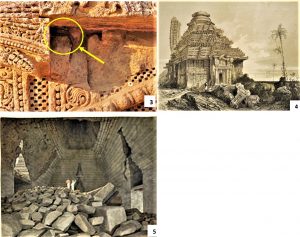
The experience center states the reason for the collapse as ransacking by Muslim invaders, the impact of nature, and the delay in the start of the restoration process. But there is also another theory that floats, which says the reason for the collapse is related to the play of Magnets, Diamagnets, and the equilibrium, which was deliberately disturbed. Kalapahad knew the story of how Dharmapada had Levitated the statue of the deity. He may have cut/broken the diamagnet base below the statue thus cutting the forces, leading the statue to spiral upwards and hitting the magnetic coping stone. The coping stones may have broken because of the impact; however, they went missing thereafter along with it the statue of Sun God, never to be found. The diamond on the crown of the sun god also disappeared, assumed to have been plundered by Kala Pahad.
In between the stones, iron clamps and iron plates have been used extensively which can be seen from in the chipped structure. After the coping stone was broken or stolen, the magnetic forces and embedded iron might have made the structure unstable and it is said to have collapsed very soon.
Other Anecdotes
The dedication of King Narasimhadeva
It is said that once King Narasimhadeva was touring the temple premises as the masons kept toiling away at building the temple. During those days Head Masons had attendants to hand over them refreshments like Paan (betel leaf) and water so that they don’t lose focus and time. Once without Mason’s knowledge, the King himself stood as an attendant and offered Paan from his own stack. The mason noticing the difference in taste looked back and saw the King standing. He apologized but the king said he was proud to have attended to the mason, who was building the temple for his revered deity.
The International Trade
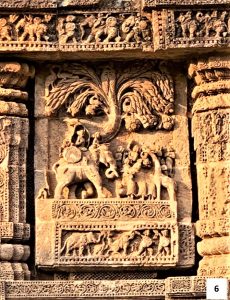
It is said that there were trade relations between Kalinga and Southeast Asian countries and African countries. There was an exchange of knowledge as well. Bisu Moharana might have taken inspiration and scientific knowledge from Egyptians in building the mega structures. Egyptians, by that century, were already experts in mega structures.
On the wall of the temple now also one can see the sculpture of a giraffe kind of animal which is said to have been a gift for the king of Kalinga all the way from South Africa.
Similarly, another sculpture shows a short man with mongoloid features which was probably a guest from China, another country with whom Kalinga already had trade relations.
A sneak peek into the life of normal people of that time
The upana (moulding) layer at the bottom of the platform contains friezes of elephants, marching soldiers, musicians, and images depicting the secular life of the people, including hunting scenes, a caravan of domesticated animals, people carrying supplies on their heads or with the help of a bullock cart, travelers preparing a meal along the roadside, and festive processions. There are also sculptures depicting the daily life of the elite as well as the common people. For example, girls are shown wringing their wet hair, standing by a tree, looking from a window, playing with pets, putting on makeup while looking into a mirror, playing musical instruments such as the vina, chasing away a monkey who is trying to snatch items, a family taking leave of their elderly grandmother who seems dressed for a pilgrimage, a mother blessing her son, a teacher with students, a yogi during a standing asana, a warrior being greeted with a namaste, a mother with her child, an old woman with a walking stick and a bowl in her hands, comical characters, couples in various stages of intimacy, among others.
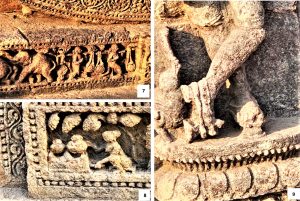
Conclusion:
Having visited Konark and seen the Sun temple numerous times, first as a child, then as a photographer while studying Architecture, later as a guide to visiting relatives, I had never looked at the temple in more amazement or admired the brilliance of architects of those times as much as I did this time. For this perspective, I am forever grateful to my son and his inquisitive mind.
Internet Sources: https://en.wikipedia.org/wiki/Konark_Sun_Temple
https://www.myindiamyglory.com/2018/01/03/konark-sun-temple-magnetic-vigraha-destruction-kalapahad- islamic-convert/
Photographs by Soumya Das, unless otherwise mentioned


